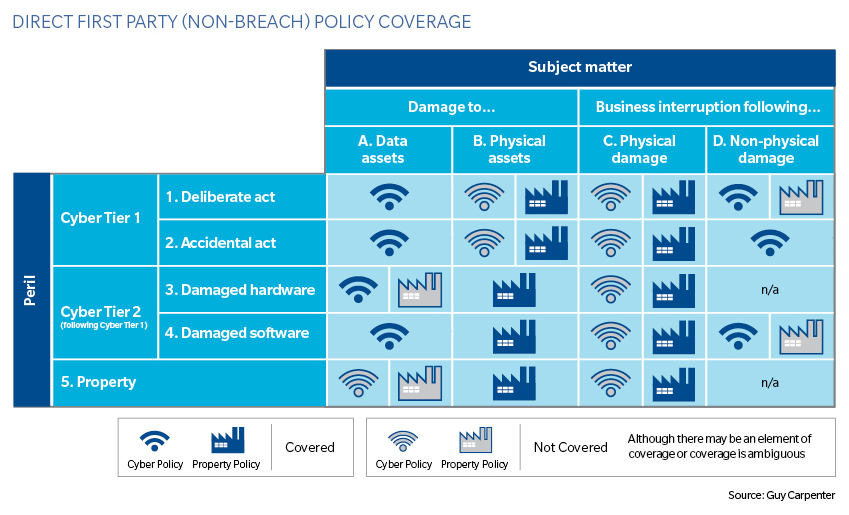

Morley Speed, Managing Director
Column D (below) outlines the areas in which cyber insurance would be expected to operate. However, to date, the cover has focused on data breaches rather than business interruption (BI) arising from disruption of industrial control systems.
The reliance of the industrial and commercial sectors on cyber technology, most notably in the context of Industry 4.0, suggests this is an area of significant opportunity for (re)insurers.
Although cyber would seem to be the logical destination for this exposure, there is the severe practical difficulty of monetary capacity. There are very few cyber limits above USD 500 million, whereas this is not an exceptional figure for corporate property.
As a consequence, non-physical damage BI is finding its way into property policies, although it is recognized as generally being for sub-limits well below USD 500 million.
However, even a sub-limit of USD 50 million would represent a significant cyber limit and would certainly require significantly more underwriting information, and probably premium as well.
However, property cover is usually restricted to targeted malicious cyberattacks, whereas a cyber policy would give much broader cover for disruption of control systems.
The key strategic question is: where will non-physical damage BI end up - within cyber or property?
To a large extent the answer will depend on reinsurers’ risk appetite and requirements to control cyber exposures, particularly aggregation. However, it will also involve a realization by property underwriters that original clients buying BI cover do not necessarily make the distinction between the material and the virtual worlds.
In response to this exciting challenge, Guy Carpenter has established a joint initiative with Symantec, combining relevant and credible data with both traditional modelling approaches and innovative ones, such as application of the cyber “Kill-Chain” methodology.
It remains to be seen how the (re)insurance industry will align its capacity for Industry 4.0, but it is already clear that there will be increasing and sustained demand for such capacity in the future.